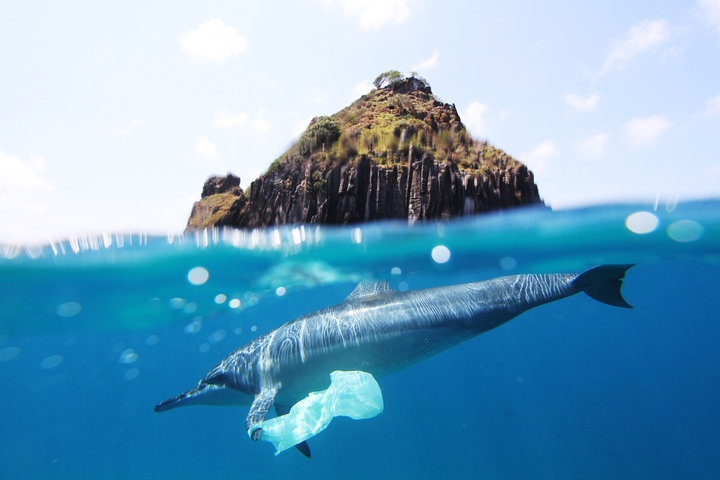'A Must-See'
The big reveal did not disappoint.
A year in development and then some in the making, a unique collaborative project of UC Santa Barbara researchers and MOXI, The Wolf Museum of Exploration + Innovation is at last live at the new public facility now open for business.
To call it a display isn’t a remotely fair descriptor of the captivating experience in science, technology, engineering, art and math — or STEAM — that is “Probably/Possibly.” The piece and the complex instrument on which it runs were conceived, designed and built for MOXI’s media room by UCSB’s JoAnn Kuchera-Morin, a professor of media arts and technology and of music, and her AlloSphere Research Group (ARG).
Surrounded by a 100-degree curved screen and active stereo projectors, visitors use touch screen and mobile devices to engage with the installation, which uses various wave functions to explore the currents of an electron inside a hydrogen atom. An elegant interface exposes parameters of the simulation and of the visual and aural rendering, and allows users to compose their own media pieces through sequencing state presets.
In the words of Kuchera-Morin, creator and director of campus’s 3-D research lab, the AlloSphere, it’s an “immersive, interactive media composition and visual, aural, quantum synthesizer.” Steve Hinkley, MOXI’s president and CEO, sums it up succinctly from the viewer’s perspective: “It is a must-see.”
“It’s an absolutely mesmerizing experience, and it brings ‘real science’ — meaning research directly from scientists, engineers and artists — into our space, unfiltered,” Hinkley said of the UCSB-born installation. “And for us, that context is so critical because it answers the important question, “What is the value of doing science?”
Boom. Those are precisely the things Kuchera-Morin and her team aspired to achieve with the innovative endeavor to not only give the community direct access to university-level arts and science, but also to involve them in its creation.
“It’s been a wonderful collaboration and very successful on all counts,” Kuchera-Morin said of the ARG-MOXI partnership that has culminated with the museum’s opening. “Being able to align with the very informed and educated public out there in Santa Barbara and show them a new vision and future directions, and the excitement we got at that level, the aspect of partnering with the community, to let them engage with what we’re doing out here at UCSB and get their input, from their perspective — it’s all been really exciting.
“I think this proves that we can engage at very high level of arts and science and make it digestible to the general public,” she added. “They understand it. We don’t have to dumb it down. This is a new way of communication, and it’s been successful on all those lines.”
The two institutions were spurred to join forces on the media installation by a common mission of public service and a mutual aim to foster public engagement with STEAM subjects. Kuchera-Morin’s group and MOXI also share a goal of reforming education at the intersection of arts and science. Their successful collaboration is a model for what such a partnership can be, according to Hinkley.
“It has been an incredible journey for us — working with JoAnn and her team to fine-tune the space, find the right approach to communicating their content and working alongside extraordinarily talented minds has been highly enriching,” he said. “The relationship is a true partnership where we critically rely on one another to make the experience great for our guests. The knowledge gained from this experience will continue to inform how we approach the next collaboration, and our hope is that it has served a similar purpose for ARG as well.”
Indeed it has, concurred Kuchera-Morin, who characterized the effort as a proof of concept. On its vision to grow the local STEAM community and test a cooperative model that could be replicated by other programs at UCSB and other organizations on the Central Coast, the pilot outing, she asserted, has delivered.
“It has all been positive and has really served its purpose in bringing the community together,” Kuchera-Morin said. “Our next step is to engage with even more places and bring our venues and campus partners into the community by doing lectures, public demonstrations, immersive demonstrations. The next thing for ARG is bleeding-edge research intersecting science, art and technology, and the development of new instruments that can scale to any size and any shape. We’re ready to go.”





